Olympus Zuiko Digital ED 14-35 mm f/2.0 SWD
3. Build quality
When the better fastness of the Olympus is opposed to the wider focal range, we can try to compare it with the 24-70 mm f/2.8 class devices. The next chart will allow us to look more closely at the Olympus’s parameters and those of its rivals. Once again the dimensions and the weight of the Olympus are nothing exceptional – it doesn’t differ almost at all from the Canon and the Nikkor; only the lightweight and compact Sigma sticks out here.
How big the Olympus 14-35 mm really is can be seen in the photo below, where that model is positioned near the Olympus 35-100 f/2.0 and the Sigma 1.4/30.
Please Support UsIf you enjoy our reviews and articles, and you want us to continue our work please, support our website by donating through PayPal. The funds are going to be used for paying our editorial team, renting servers, and equipping our testing studio; only that way we will be able to continue providing you interesting content for free. |
- - - - - - - - - - - - - - - - - - - - - - - - - - - - - - - - - - - - - - - - - - - - - - - -
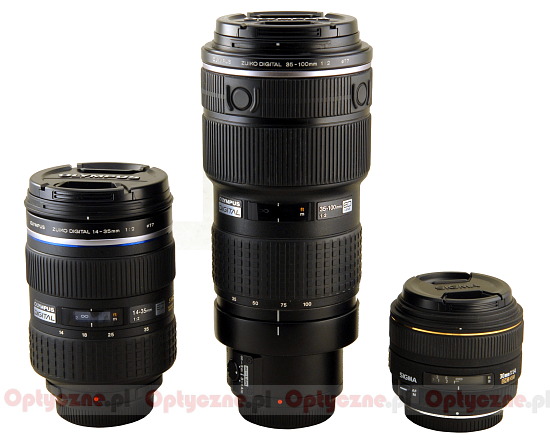 |
The build quality and the design of the tested lens are beyond reproach. It is made very well, as it befits a high-end instrument – we have here a solid, weather-sealed construction with a metal mount and a non-rotating filter thread, 77 mm in diameter, which surrounds a huge front element with a diameter of 7 cm.
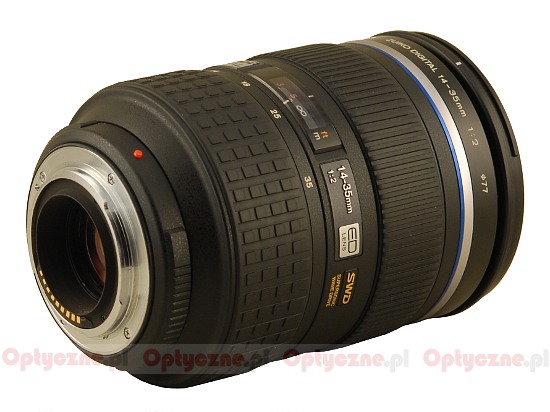 |
It’s worth adding that the lens changes its dimensions with the change of focal length. It is the shortest near 20 mm; on passing to 14 mm the front element extends by 7 mm and at 35 mm – by 17 mm. You change the focal length by using a comfortable, big and ribbed ring. It moves smoothly and is well-damped. In fact the change of dimensions is the only thing which could make us worried because it might undermine the tightness of the tested lens. Here, however, we count on the opinions of our Readers, the users of this device – they can tell you about it much more than we can.
The second big ring which you can find on the barrel is for manual focusing. It is an example of a rare solution in Olympus lenses – the ring is completely mechanical and that’s why it moves the distance scale even when the body is switched off or the lens detached. The ring allows us to set the focus with utmost precision. Running through the scale will take a 200-degree turn.
Between these two big rings you can find a clear distance scale, expressed in meters and feet, behind a glass window.
The optical construction of the lens consists of 18 elements in 17 groups. Among them you can find two low-dispersion ED glass elements, one aspherical element, and one which combines those two properties - it is made of low-dispersion glass and was produced in the “glass mold” technology, incorporating an aspherical metal die at the same time. Inside, there is also an aperture with nine diaphragm blades which can be closed down to f/22.
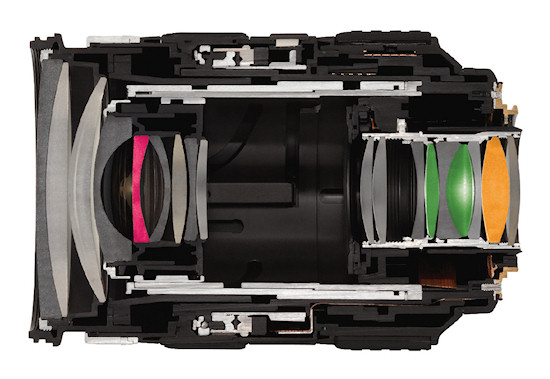 |
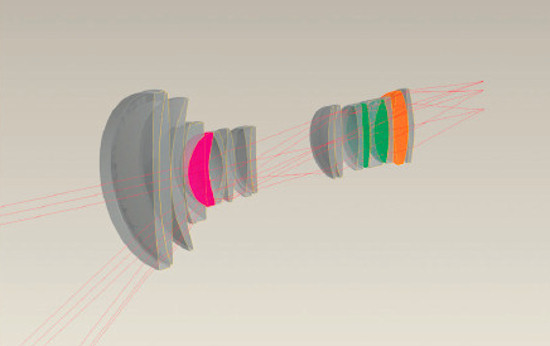 |
The buyer gets both caps, a petal-type lens hood and a case included in box.
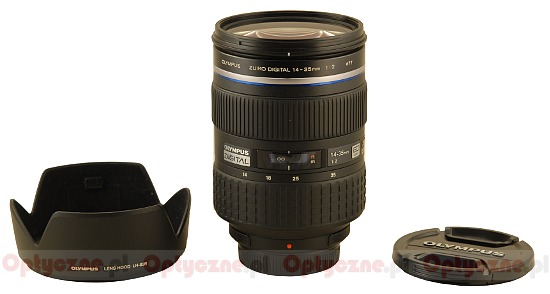 |






